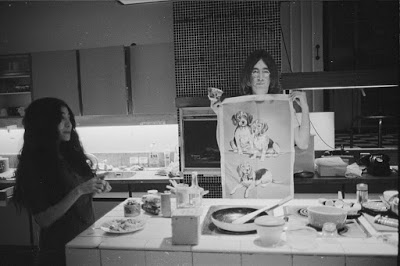The Beatles taking a break this last day of the month.
- Register
- Log in to Tune-In
- Wishlist (0)
-
Shopping cart
(0)
You have no items in your shopping cart.
Beatles A Day in the Life Blog posts of '1968' 'November'
Originally published in the Guardian on 29 November 1968
John Lennon, one of the Beatles, was fined £150 with 20 guineas costs at Marylebone Court in London yesterday after admitting possessing the drug cannabis. A charge against him of obstructing police in the execution of a search warrant, to which he pleaded not guilty, was dismissed after the prosecution had offered no evidence on this.
Mrs Yoko Ono Cox (34), a friend, who was with Lennon in the dock, was cleared of both charges against her – possessing cannabis and obstructing police – after the prosecution had offered no evidence against her. She had denied both charges.
Drugs in flat
Mr Roger Frisby, prosecuting, said the pleas were acceptable to the prosecution. As far as the charge of possessing cannabis was concerned, they were found in a flat which was in their joint occupation. "When the drugs were found Lennon took full responsibility himself and by implication said Mrs Cox had nothing to do with it. There is not evidence that she did and in the circumstances I think it right to accept the plea."
As far as the charge of obstructing the police was concerned, there was an obstruction or delay of seven or eight minutes before the officer was admitted to the flat. There was no suggestion that either defendant took advantage of the time to dispose of the drugs and he felt the plea was a proper one to accept.
Mr Martin Polden, defending, said that Lennon and Mrs Cox had occupied the flat for about three months before the police searched it. They had moved there following Mr Lennon's "marital" difficulties.
It was a "highly emotional situation" for Lennon and Mrs Cox. She had been in hospital for about two weeks, hoping that her baby could be saved, but it was not. They were looking forward to having a child. Mr Polden said of Lennon: "He is an artist of note and integrity. He has brought some pleasure to millions. He has stood by his views. He is entitled to some compassion of the court."
The magistrate: "Can I take it that John Lennon is a man of considerable substance ?"
Mr Polden: "He is a man of considerable substance."
The magistrate told Lennon: "I have come to the conclusion that it is not possible to deal with this matter by way of conditional discharge. There must be a financial penalty."
[John Lennon's divorce from his first wife Cynthia was granted on 8 November 1968. He married Yoko Ono in 1969.]
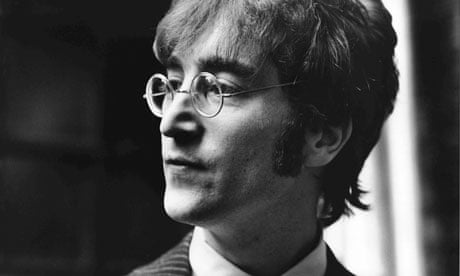
John Lennon appeared at Marylebone Magistrates' Court, London for cannabis possession.
John pled guilty, because he was worried Yoko Ono may be deported from the United Kingdom.
During the hearing Lennon's solicitor, Martin Polden, told the court that Ono had recently lost their baby, which had been a terrible blow to the couple. Additionally, Polden declared that Lennon had renounced drugs after becoming a devotee of Maharishi Mahesh Yogi the previous year, and stressed that the Beatle had "given pleasure to millions" through his music.
The magistrate quashed the charge of obstruction to justice, and fined Lennon £150 plus court costs of 20 guineas. Lennon was also warned that if he was found guilty again of a similar offence he risked a custodial sentence.
It was better when it happened. It's been building up for years – thinking something would happen. Now, the fear has gone a bit. Now you know what it's like, it's a bit different. And it's not too bad; a £150 fine.
Although the judge exercised some leniency, the repercussions of the case continued for Lennon for many years. The conviction was a key factor in the Nixon administration's efforts to deny Lennon a Green Card for residence in the US.
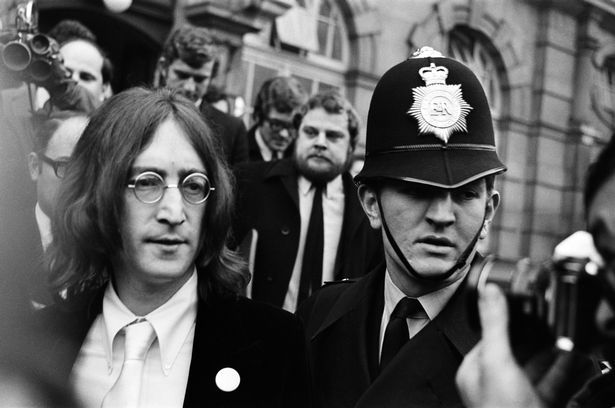
Music-versary: The Beatles’ ‘White Album’ was released November 25, 1968
Credits: John Lennon (Guitar, vocals); Paul McCartney (Bass, vocals); George Harrison (Guitar, vocals); Ringo Starr (Drums, vocals)
Backstory: Better known as the White Album for its stark, simple cover art, the Beatle’s double, self-titled LP can be seen as the musical peak for the band that helped define the 1960s—but also the beginning of the end for them.
In February 1968, the band took a trip India to the Maharishi Mahesh Yogi’s Transcendental Meditation Retreat, along with some famous friends like Donovan, Mike Love, and Mia Farrow. There, they were able to all spend time reconnecting with themselves and their art, each writing numerous songs in the process. George, in particular, was coming into his own, though as musicologist Walter Everett later noted, he was quiet about this fact, and was “privately prolific.”
There was more than just a musical disconnect, though. John had taken up with avant-garde artist Yoko Ono, and John’s reverence for her opinions, along with her new presence in the studio (and John’s burgeoning heroin addiction) drove a wedge between him and his erstwhile closest partners. George was quickly finding himself, jamming with his good friend, Cream guitarist Eric Clapton. Paul was trying to keep the band together—even writing Hey Jude for Lennon’s son, Julian—and Ringo was so fed up with the outfit that he quit for a few days. But the final album was, if disjointed, a masterpiece, running the gamut from rock and roll (Back in the U.S.S.R) to folk (Blackbird) to guitar spiritual (While My Guitar Gently Weeps) to a kind of distorted screech (Revolution 9) that predicted the metal days to come. As Lester Bangs would later put it, the result of the sessions would be “the first album by The Beatles or in the history of rock by four solo artist in one band.”
Rumors: In 1967, a rumor began going around that Paul McCarney had been killed in 1966 and the band, desperate to keep their group together but equally eager to share their terrible secret with the world, was putting clues in their artwork and music so their fans might share in their grief. While the cover offers no clues—a clear change from their previous album, Sergeant Pepper’s Lonely Hearts Club Band, which offered plenty of fodder—there are lyrics which let on the boys might have been in on the joke. Referring to the cover of Magical Mystery Tour, on which one of the members was dressed as a walrus—supposedly a symbol of death—John sang on the song Glass Onion, “I told you ‘bout the walrus and me, man / You know that we’re as close as can be, man / well here’s another clue for you all / the walrus was Paul.”
Parting Ways: Another longtime collaborator, producer and “fifth Beatle” George Martin, walked off the job on this album. Later, he claimed that he wasn’t fully happy with the product. “I thought we should probably have made a very, very good single album rather than a double,” he said. “But they insisted. I think it could have been made fantastically good if it had been compressed a bit and condensed. A lot of people I know think it’s still the best album they made.”
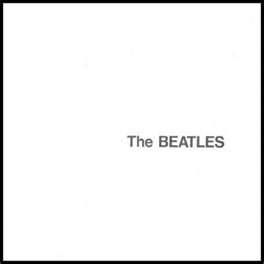
The interview took place at John Lennon and Yoko Ono’s temporary basement flat in London -- a flat where Jimi Hendrix, Ringo Starr and William Burroughs, among others, have stayed. But the flat seemed as much John and Yoko’s as the Indian incense that took over the living room. The walls were covered with photos of John, of Yoko, a giant Sgt. Pepper ensign, Richard Chamberlain’s poster collage of news clippings of the Stones bust, the Time magazine cover of the Beatles.
We arrived at five on the afternoon of September 17, said hello to gallery owner Robert Fraser, who had arranged the interview, and to John and Yoko, sitting together, looking “tres bien ensemble”. We sat down around a simple wooden table covered with magazines, newspapers, sketch paper, boxes, drawings, a beaded necklace shaped in the form of a pentangle.
John said he had to be at a recording session in half an hour, so we talked for a while about John’s show at the Fraser Gallery. John wrote some reminders to himself in the wonderfully intense absorbed way that a kid has painting the sun for the first time. As a philosopher once remarked: "Were art to redeem man, it could do so only by saving him from the seriousness of life and restoring him to an unexpected boyishness." When we arrived the next afternoon, September 18, John was walking around the room, humming what sounded like “Hold Me Tight” -- just singing the song to the air. Old '50's forty-fives were scattered about the floor, and John played Rosie and the Originals’ version of “Give Me Love.” We talked about the lyrics of Gene Vincent’s “Woman Love.” In spite of having slept only two hours, John asked us to sit down on the floor and begin the interview.
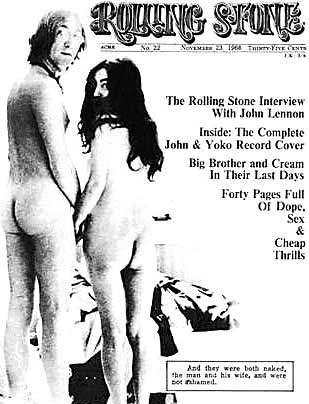
If there’s one word to describe The Beatles’ ninth studio album, it’s “chaos.”
There was so much going on in the worlds of John, Paul George and Ringo. For starters, the band was coming off the massive success of Sgt. Pepper’s Lonely Hearts Club Band. They then founded Apple Corps Ltd., which drained a bunch of money. The Beatles then got all up in Transcendental Meditation and spent some time in India, where they wrote most of the album.
Oh…and the recording of “The While Album” was the time when John Lennon first starting seeing Yoko Ono, who was often present at Abbey Road Studios, which was odd considering The Beatles up until that point worked alone.
While the 30-track double album brought forth an incredibly diverse set of music, it was a sign that it was the beginning of the end. Each Beatle worked on their own songs separately and only worked with their band mates when necessary. Despite this divide and tension, The Beatles still managed to deliver one of the most bold albums in the history of rock.
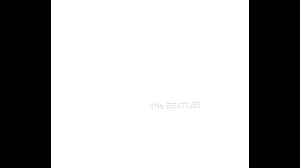
Today George Harrison was in a recording session for the British band Cream to record the song Badge. It took place at Wally Heider Studios in Los Angeles. Badge was written by Harrison and Eric Clapton.
Badge was produced by Felix Pappalardi, who had worked with Cream since their Disraeli Gears album and the song was credited to Clapton and Harrison on the UK single.
Harrison performs rhythm guitar on Badge and Clapton plays midway through the song.
Guitar Player Interview, 1987:
Q: I always wondered about, speaking of collaboration, “Badge,” the bridge part where the guitarist played through the Leslie. Is that you?
GH: No, that’s where Eric enters. On the record Eric doesn’t play guitar up until that bridge. So there was Felix, Jack Bruce, Ginger Baker and me. I played the rhythm, the chops. And we played the song right up to the bridge, at which point Eric came in on the guitar on the Leslie. And then he overdubbed the solo part later.
Q: Did he write all the music?
GH: I wrote most of the words. Eric had that bridge, definitely. And he had a couple of chords I think. He called me up saying, “look, you know we’re doing this last album and we’ve all got to have our song by Monday,” or something. He came by and I think he had the first couple of chord changes, and then I joined in and finished the verses off. And then he had the middle bit already. I think I wrote most of the words to the song but he was there, and we bounced off of each other.
Stream: http://buff.ly/2eUiySI
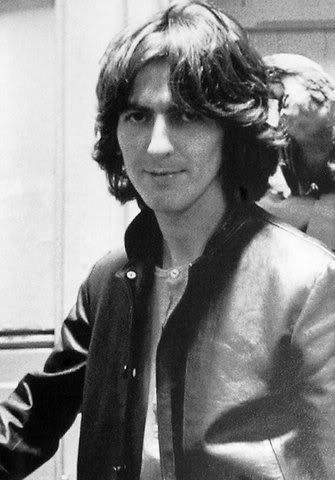
- 1962
- 1963
- 1964
- 1965
- 1966
- 1967
- 1968
- 1969
- 1970

